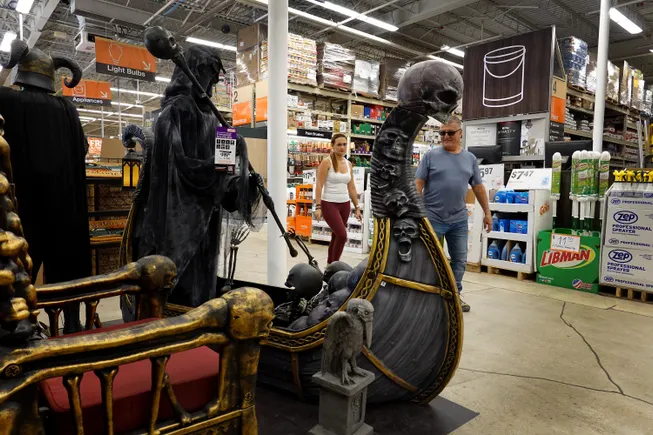Listen to the article
Dive Brief:
Consumers are expected to spend a record $13.1 billion this season on Halloween, up about 13% year over year, according to the National Retail Federation’s annual consumer survey.
The projected spending compares to the $11.6 billion spent on Halloween last year and is above the previous record high of $12.2 billion set in 2023. Per-person spending is expected to reach a record high of $114.45 this year, almost $11 more than last year.
Between adults ($2 billion), children ($1.4 billion) and pets ($860 million), consumers will spend close to $4.3 billion on costumes, according to the NRF report.
Dive Insight:
While consumers are expected to spend this Halloween, tariffs are weighing on their minds.
Close to 80% of consumers who responded to the NRF survey believe prices will be higher this year due to tariffs, yet some 73% said they would continue to celebrate the holiday in a myriad of ways, similar to the 72% who did last year.
“Even with concerns about price increases due to tariffs, Halloween continues to resonate with consumers of all ages,” Katherine Cullen, NRF vice president of industry and consumer insights, said in a statement. “Whether it’s dressing in costume or carving a pumpkin, more consumers plan to take part in Halloween activities and traditions.”
Of the over 8,000 consumers surveyed between Sept. 2 and Sept. 9 by NRF as conducted by Prosper Insights and Analytics, 78% said they would purchase Halloween decorations and contribute about $4.2 billion in sales. And 38% said they would buy Halloween greeting cards, an increase over last year’s 33%, contributing $700 million in spending.
Candy continues to be the most popular Halloween purchase, according to the report, with a projected $3.9 billion expected to be spent on holiday treats.
This year, nearly half (49%) of consumers said they began shopping for the holiday in September or earlier, up from 47% last year. And discount stores continue to be the top destination for Halloween items, with 42% of consumers planning to shop with those retailers, up 5 percentage points from last year.
“For consumers looking to balance their budgets, strategies such as buying early to spread out purchases or shopping at discount stores are just some ways they are being mindful of costs,” Phil Rist, executive vice president of strategy at Prosper, said in a statement.
Retailers have been responding by pushing out their Halloween assortments earlier in the year. The Home Depot announced its Halloween collection in late July. In September, Lowe’s introduced a collection of inflatable spooky cartoon characters that light up. And Target in August dropped 1,500 Halloween items, with most under $25.


